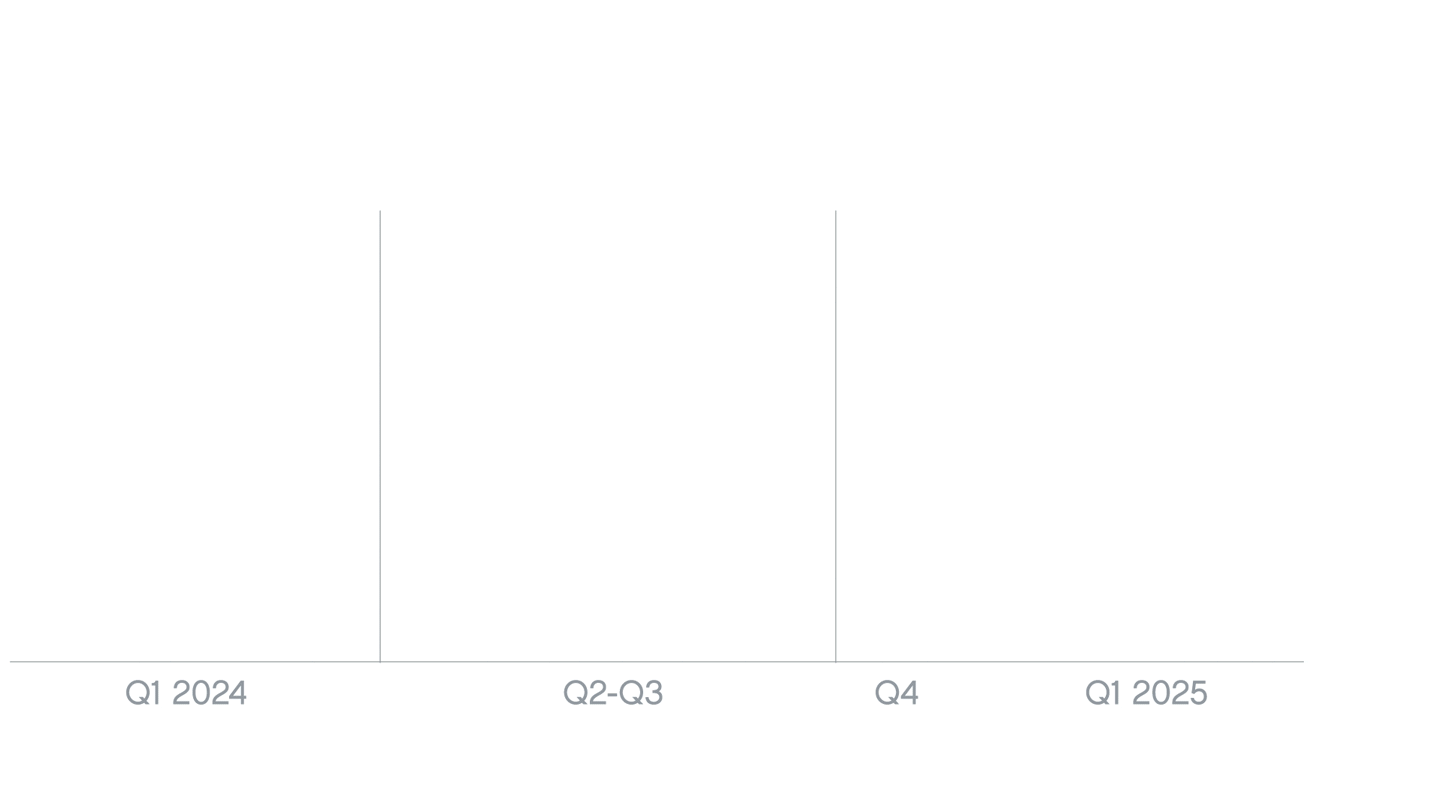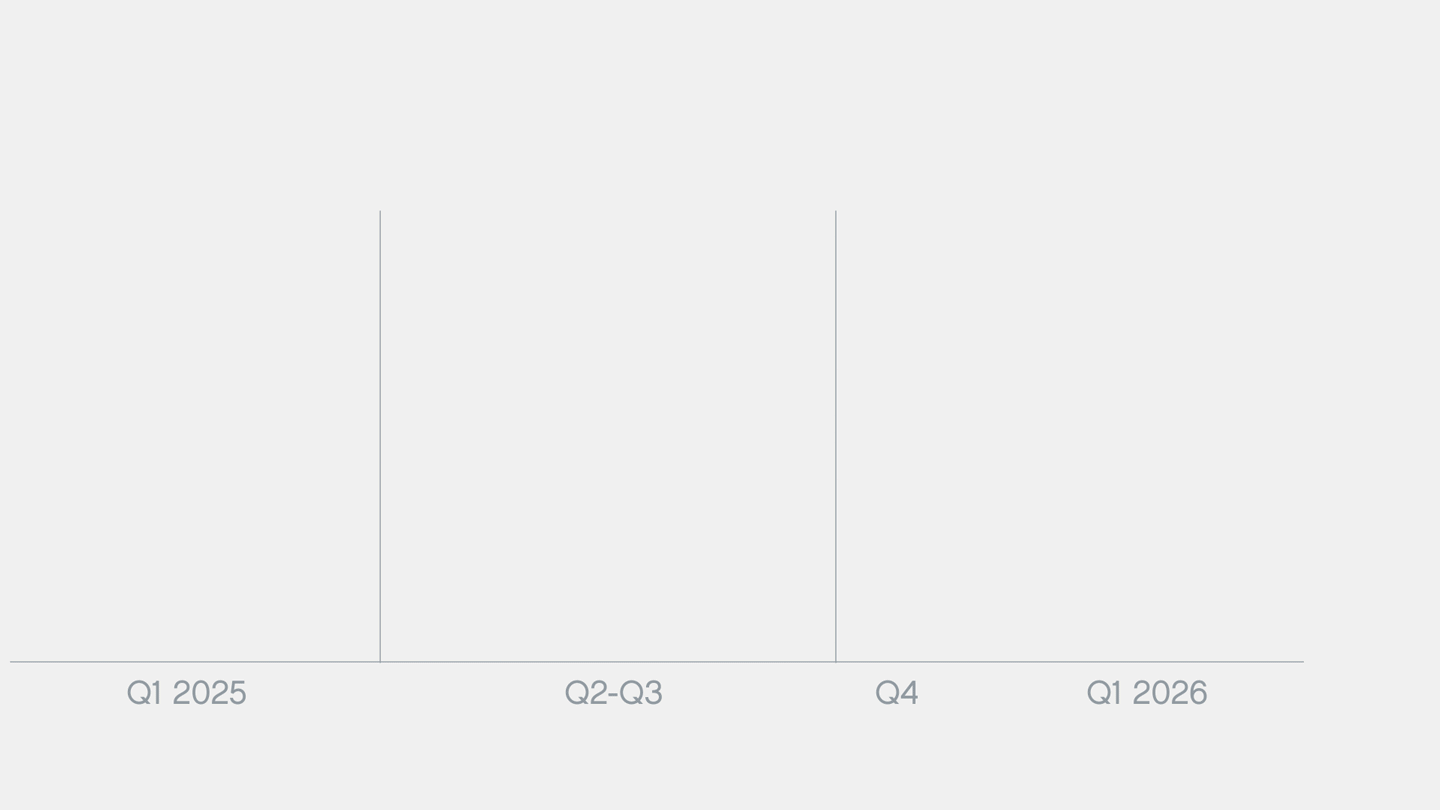A year that defied expectations
As we turn the page on 2024, one thing is clear: the world we invest in continues to evolve. The past year defied expectations, surprising us with economic resilience even as markets braced for turbulence. So, what did we learn, and how can we better prepare for what 2025 might bring?
2024 was a masterclass in unpredictability. Many economists and investors entered the year expecting a noticeable economic slowdown. Higher interest rates from central banks had, after all, been squeezing growth. But, as the year unfolded, we discovered that the global economy had more fight left in it than anticipated.
Despite some concerns, the US avoided a recession, and the Eurozone and the UK only experienced mild downturns. China, after a tough period, picked up some steam towards the end of the year, adding some spark to global markets. That said, there were occasional spikes in market volatility that made us hold our breath. But the story overall was one of growth – powered in no small part by structural themes, like the rapid rise of new technologies.
So, what does this teach us? It’s a reminder that while forecasts are helpful, they can never fully account for the complexity of global markets. It’s a dance between maintaining conviction and showing adaptability when things change.

Daniele Antonucci
Co-Head of Investment & Chief Investment Officer2024: the slowdown that never happened

| We expected a slowdown | |
| But we got solid growth instead | |
| We got volatility bouts | |
| Markets where generally boosted by long-term growth themes |
2025
A year of progress and contrasts
What should we expect from 2025? Unlike 2024, this year seems poised for a more moderate, yet still dynamic, economic path. But make no mistake: even though the economic outlook looks less uncertain, investors may still get some surprises. Here’s what we’re watching:
2025: getting ‘back to normal’

| The slowdown we didn’t get previously should happen this year | |
| We think it’s likely that we’ll simply slow towards a more ‘normal’ pace | |
| We got volatility bouts | |
| Markets where generally boosted by long-term growth themes |
Central banks
Central banks will continue to cut interest rates
Central banks will likely cut interest rates further as inflation continues to normalise. But don’t expect a return to the ultra-low rates of the past decade. High debt levels and the risk of inflationary flare-ups – driven by fiscal stimulus especially in the US – mean that central banks will likely only reduce rates to more ‘normal’ levels of around 3.5% for the US and the UK, and 2% for the Eurozone. Yields on cash will likely decline, increasing the incentive to invest elsewhere.
Global economic growth
A more ‘normal’ pace of global economic growth
The US, supported by fiscal stimulus, is likely to remain resilient, with some upside potential for both growth and inflation at longer horizons. In contrast, we expect the Eurozone and the UK to lag, with the risk of trade tariffs creating a headwind for growth, which we expect to stay subdued. This divergence in growth suggests a strong US dollar in the near term, although the weight of US government debt could weaken it in the long term.
China
China is likely to continue to grapple with its structural issues
China keeps struggling with its long-term challenges in real estate and demographics despite its recent stimulus and policy changes. These monetary and fiscal changes have triggered some degree of economic stabilisation, and a short-term equity rally domestically. For us to turn more optimistic, we’d have to see more far-reaching stimulus. However, with a Trump presidency, there are concerns about trade tensions and additional tariffs on China.
Where we’re investing
Our market insights
Given these expectations, the question becomes: where do we invest in 2025?
Here are some critical insights that guide the strategy of our Investment Committee:
Equities
Positive on the US, cautious on Europe, not the time yet for emerging markets
We continue to favour a slight equity overweight and, within that, prefer US equities. As the Big Tech companies that dominate traditional indices tend to have more demanding valuations, we recently added an equal-weighted index, which emphasises financials and industrials that could benefit from forthcoming US policies, broadening the rally. We’ve adjusted our European exposure to neutral, given downside risks such as higher tariffs, while maintaining our ‘insurance’ instrument which appreciates when European equities decline (in portfolios where client knowledge and experience, and regulations and guidelines, permit). Concerns about trade tensions and tariffs on China, and inflation and rate hikes in Brazil, also are one reason why we currently have no tactical positions on emerging market assets (both equities and debt).
Bonds
Corporate credit is risky at current valuations, developed market sovereigns are attractive
Along with gold (which we currently hold in line with our long-term allocation), bonds play a vital role in diversifying risks and, in some cases, they’re attractively valued. So we’re increasing our exposure to gilts, still preferring short-dated ones, and US Treasuries, while staying underweight on the latter given fiscal concerns. We’re reducing our exposure to European and US investment grade corporate credit, as we think valuations don’t adequately compensate for the risks. We also remain underweight riskier high-yield bonds. Strategically, with US fiscal policies potentially turning more inflationary, we’re swapping shorter-dated US inflation-protected bonds for longer-dated ones.
how our tactical positioning has changed over the past year

N = neutral weighting of asset class vs strategic (long-term) asset allocation.
Structural trends
The forces shaping our future
While short-term movements are important, long-term structural trends are reshaping the world.

Here’s a closer look at our top themes for 2025
Artificial Intelligence
From tech enablers to tech beneficiaries
We’re in the early stages of AI’s transformative journey. That may not sound like a new story at all. But what’s new is that, instead of focusing on narrow tech themes such as cloud computing or processing power, the winners of tomorrow will likely be broader beneficiaries that will use AI to gain a competitive edge. Healthcare diagnostics, efficient supply chains that reuse resources and reduce waste in a ‘circular economy’, and infrastructure such as data centres and next-gen power grids are just a few areas where AI will likely drive innovation.


Geopolitical fragmentation
Cybersecurity, energy, and consumers
One fundamental view of our 2024 investment outlook was that we now live in a world that’s more fragmented along geopolitical lines. Obviously, that’s still the case. With a more inward-looking US, its traditional Western allies in Europe must bolster their cybersecurity infrastructure as well as their energy supplies, making renewable energy investments a growing necessity. Geopolitical fragmentation also means thinking about a world that’s less US-centric but, rather, with different regions following a different path. So, at longer horizons, we believe we’ll see a rise in emerging market consumer aspirations for similar luxury goods, gadgets, and services as Western consumers.
Final thoughts
Thriving in a complex world
2025 will be a year of balancing optimism with pragmatism. The world is changing. But with change comes opportunity. By focusing on structural trends, staying agile, and keeping an eye on both short- and long-term shifts across publicly traded and private markets, we can be better prepared for whatever the future holds.
As we move forward, remember: success in investing isn’t about predicting every twist and turn. It’s about staying invested for the longer term, maintaining diversified portfolios, and positioning yourself to benefit from the changes on the horizon. Here’s to embracing what’s next – with confidence and curiosity.
Download Your Counterpoint Investment Outlook Report for 2025
The report covers what we believe will matter in the coming year: macro trends, the forces shaping our world, and our portfolio strategy for the year ahead.
To receive advice and to become a client of Brown Shipley, you must have a minimum of £1m of investable assets.

Important Information
Information correct as of 03 December 2024.
This document is designed as marketing material. This document has been composed by Brown Shipley & Co Ltd ("Brown Shipley”). Brown Shipley is authorised by the Prudential Regulation Authority and regulated by the Financial Conduct Authority and the Prudential Regulation Authority. Registered in England and Wales No. 398426. Registered Office: 2 Moorgate, London, EC2R 6AG.
This document is for information purposes only, does not constitute individual (investment or tax) advice and investment decisions must not be based merely on this document. Whenever this document mentions a product, service or advice, it should be considered only as an indication or summary and cannot be seen as complete or fully accurate. All (investment or tax) decisions based on this information are for your own expense and for your own risk. You should (have) assess(ed) whether the product or service is suitable for your situation. Brown Shipley and its employees cannot be held liable for any loss or damage arising out of the use of (any part of) this document.
The contents of this document are based on publicly available information and/or sources which we deem trustworthy. Although reasonable care has been employed to publish data and information as truthfully and correctly as possible, we cannot accept any liability for the contents of this document, as far as it is based on those sources.
Investing involves risks and the value of investments may go up or down. Past performance is no indication of future performance. Currency fluctuations may influence your returns.
The information included is subject to change and Brown Shipley has no obligation after the date of publication of the text to update or amend the information accordingly. Accordingly, this material may have already been updated, modified, amended and/or supplemented by the time you receive or access it.
This is non-independent research and it has not been prepared in accordance with legal requirements designed to promote the independence of investment research, and that it is not subject to any prohibition on dealing ahead of the dissemination of investment research.
All copyrights and trademarks regarding this document are held by Brown Shipley, unless expressly stated otherwise. You are not allowed to copy, duplicate in any form or redistribute or use in any way the contents of this document, completely or partially, without the prior explicit and written approval of Brown Shipley. Notwithstanding anything herein to the contrary, and except as required to enable compliance with applicable securities law. See the privacy notice on our website for how your personal data is used (https://brownshipley.com/en-gb/privacy-and-cookie-policy).
© Brown Shipley 2024



